800 Jahre Karakorum – 20 Jahre archäologische Ausgrabungen der Mongolisch-Deutschen Karakorum-Expedition
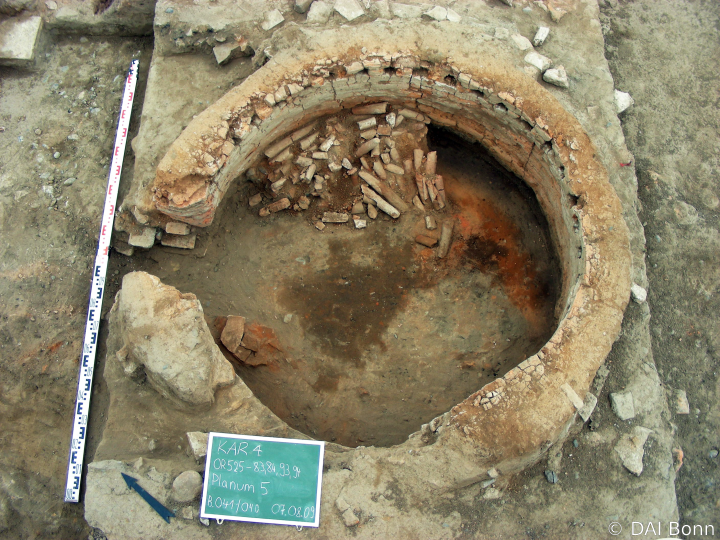
In den Jahren 2000 und 2002 konnten im Rahmen der Mongolisch-Deutschen Karakorum-Expedition die ersten mittelalterlichen Brennöfen in der Mongolei dokumentiert werden. Insgesamt fünf dieser Öfen lagen im direkten Umfeld der großen Halle. Die geomagnetische Prospektion des Stadtareals von Karakorum hatte ihre Umrisse im Vorfeld erkennen lassen, die mit bloßem Blick an der Oberfläche nicht zu erahnen waren. Vier von ihnen lagen in einer Reihe südwestlich des großen Tempels. Ihre Konstruktion war vergleichbar mit der von chinesischen Öfen mit hufeisenförmigem Grundriss, sogenannten Mantou-Öfen. Mit großer Wahrscheinlichkeit wurde in diesen Öfen vom Ende des 13. Jahrhunderts bis in die erste Hälfte des 14. Jahrhunderts Baumaterial und Bauschmuck für die Errichtung der “Großen Halle” sowie die umgebenden Gebäude hergestellt. Ein fünfter Ofen lag nordwestlich der “Großen Halle”. Er war weniger gut erhalten. Dennoch konnte festgestellt werden, dass in ihm Keramikgefäße produziert worden waren.
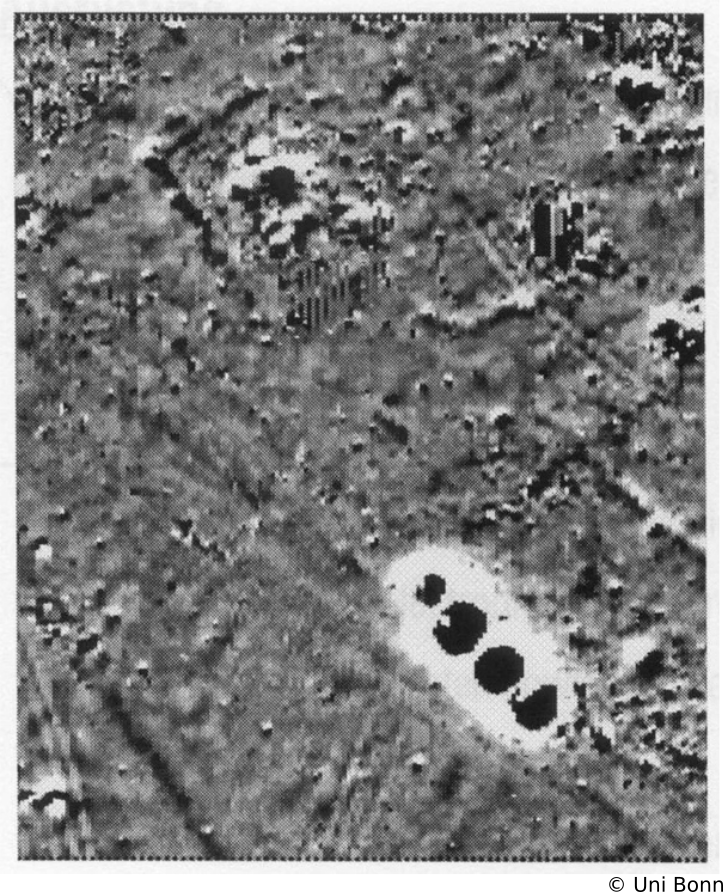
Ergebnis der Magnetometerprospektion: Überreste der Großen Halle im Norden sowie vier Brennöfen im Süden, die mit bloßem Auge nicht sichtbar waren. 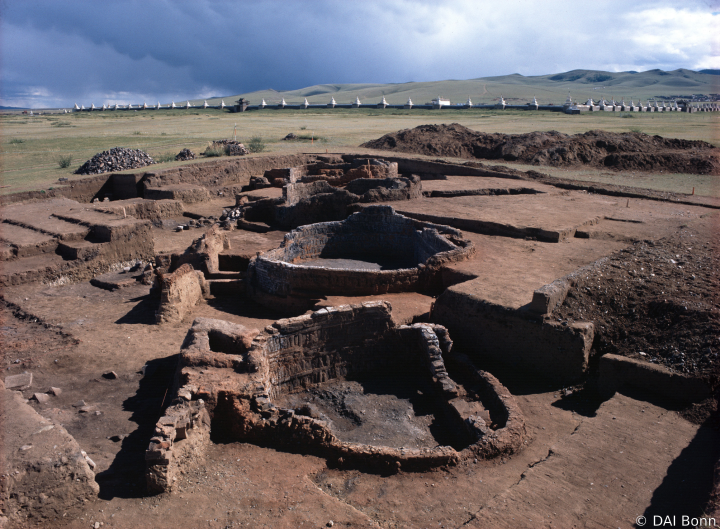
Die Ausgrabung der vier Brennöfen. 
Idee einer Rekonstruktion des Ofenbezirks südlich der “Großen Halle”. 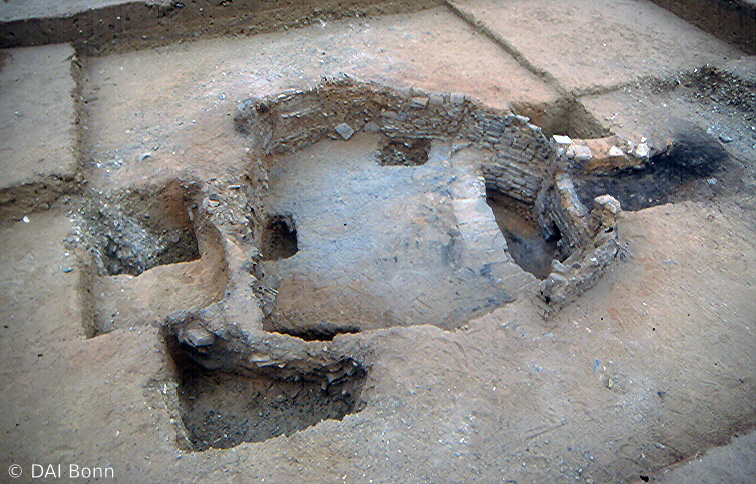
Keramik-Brennofen nordwestlich der “Großen Halle” mit gut erkennbarer Feuerkammer rechts im Bild.
In den Jahren 2008 und 2009 wurden drei Kilometer süd-westlich der modernen Stadt Charchorin auf dem westlichen Orchon-Ufer 14 weitere sehr gut erhaltene Brennöfen dokumentiert. Außerhalb der Stadt lag hier vermutlich ein großer Werkstatt- und Ofenbezirk. Auch diese Öfen dienten vom Ende des 13. bis in die erste Hälfte des 14. Jahrhunderts zur Herstellung von Baumaterial für Karakorum. Aufgrund ihrer Konstruktion, hauptsächlich ebenfalls in Mantou-Bauweise und aufgrund von künstlerischen Aspekten im Fundmaterial ist anzunehmen, dass Handwerker mit Kenntnis chinesischer Technologien die Ofenanlagen errichtet und betrieben haben.
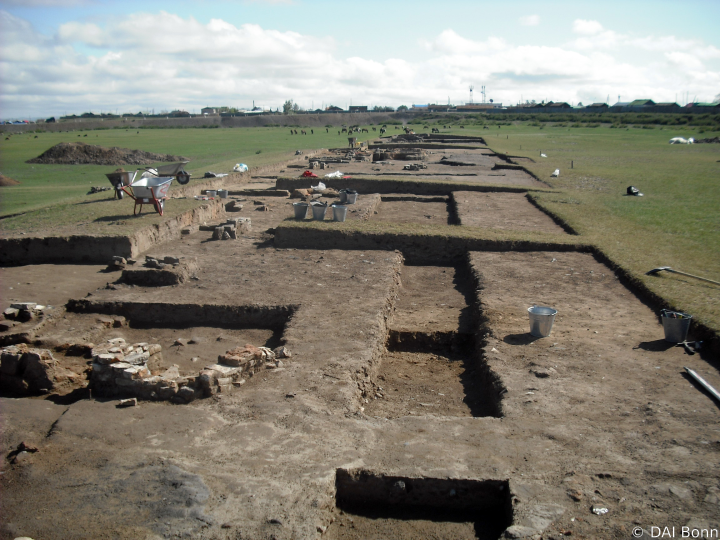
Grabung im Werkstattbezirk am Ufer des Orchon, im Hintergrund Charchorin. 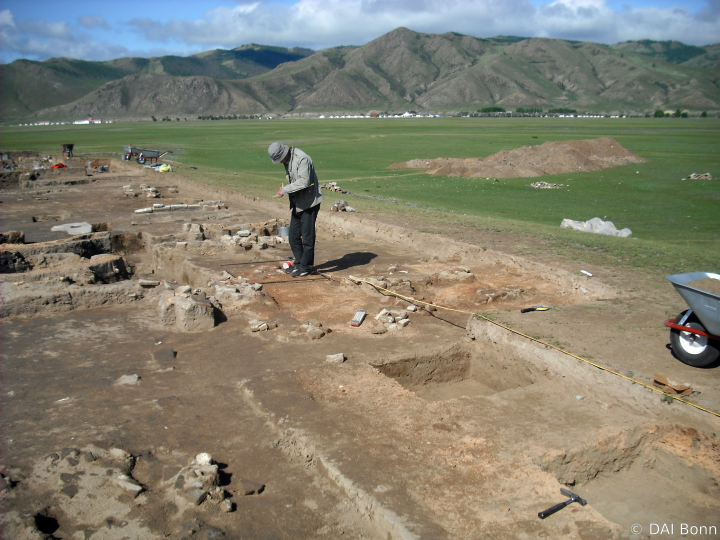
Grabung im Werkstattbezirk am Ufer des Orchon, im Hintergrund der Orchon. 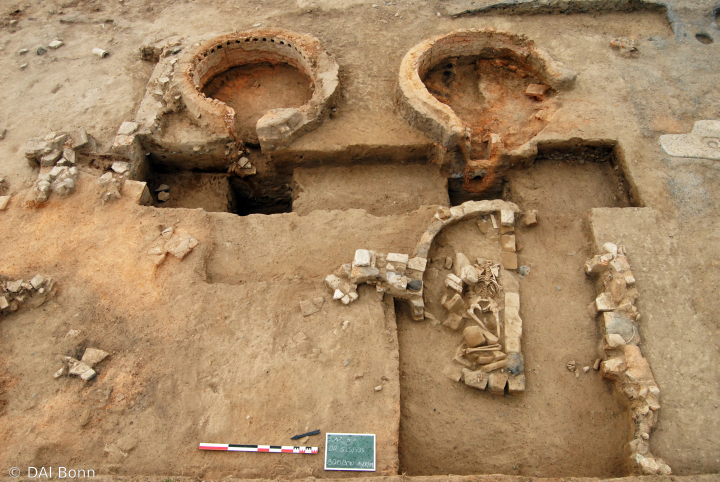
Am rechten Ofen ist das Feuerungsloch, von dem die heiße Luft von der Feuerkammer in die Brennkammer strömte, gut erkennbar. Der Grund für die Lage des Skelettes im vorderen Ofen ist unklar. 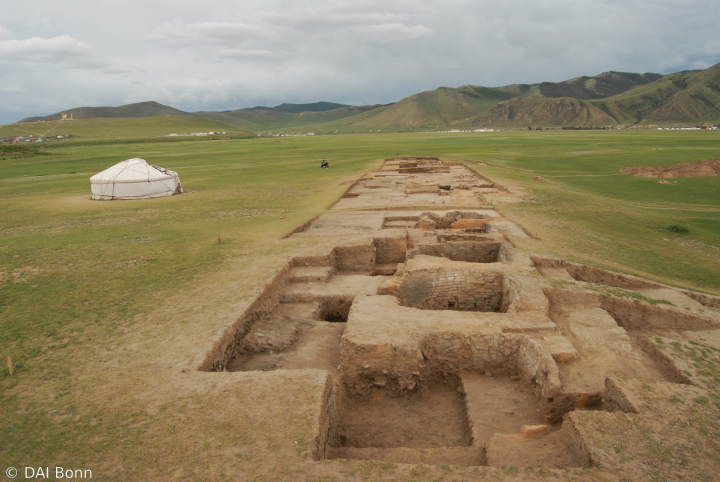
Überblick über den Brennofenbezirk am Orchon-Ufer. 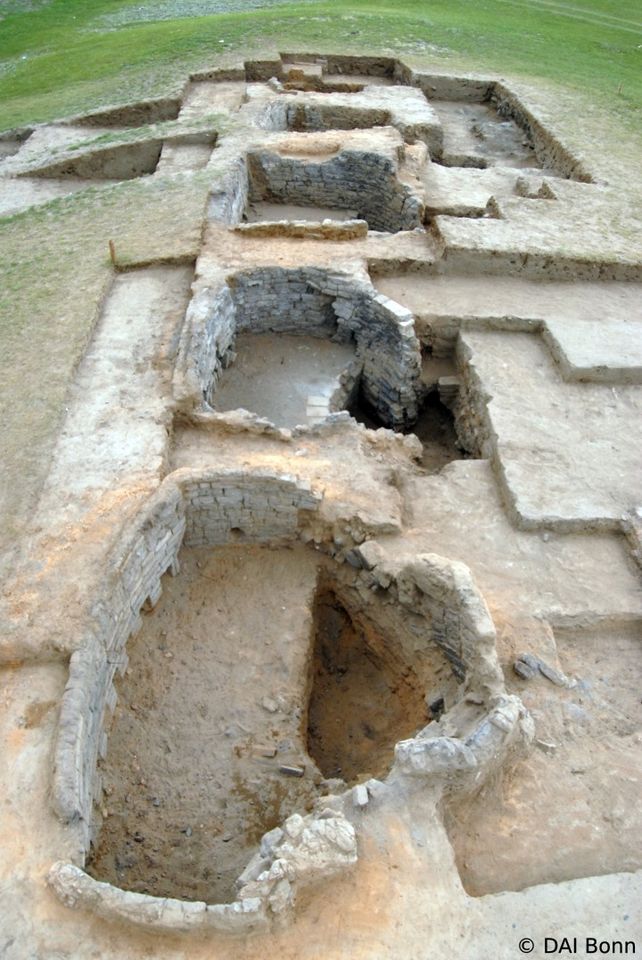
Vier sehr gut erhaltene Öfen in Mantou-Bauweise. Beim Ofen im Vordergrund sind die Öffnungen, aus denen die heiße Luft von der Brennkammer in den Kamin strömte, gut erkennbar.
The kilns of Karakorum – Construction
800 years Karakorum – 20 years of archaeological excavations by the Mongolian-German Karakorum Expedition
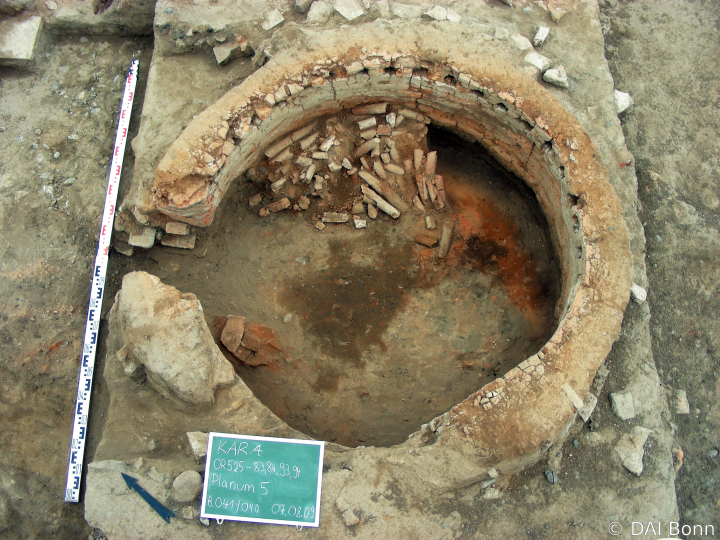
In the years 2000 and 2002, the first medieval kilns in Mongolia were documented during the Mongolian-German Karakorum expedition. A total of five of these kilns were located in the direct vicinity of the large hall. The geomagnetic prospection of the city area of Karakorum had revealed their outlines in advance, which could not be guessed at the surface with a mere glance. Four of them lay in a row southwest of the great temple. Their construction was comparable to that of Chinese kilns with a horseshoe-shaped ground plan, so-called Mantou-kilns. It is highly probable that these furnaces were used from the end of the 13th century to the first half of the 14th century to produce building materials and architectural decoration for the construction of the „Great Hall“ and the surrounding buildings. A fifth kiln was located northwest of the „Great Hall“. It was less well preserved. Nevertheless it could be established that ceramic vessels had been produced in it.
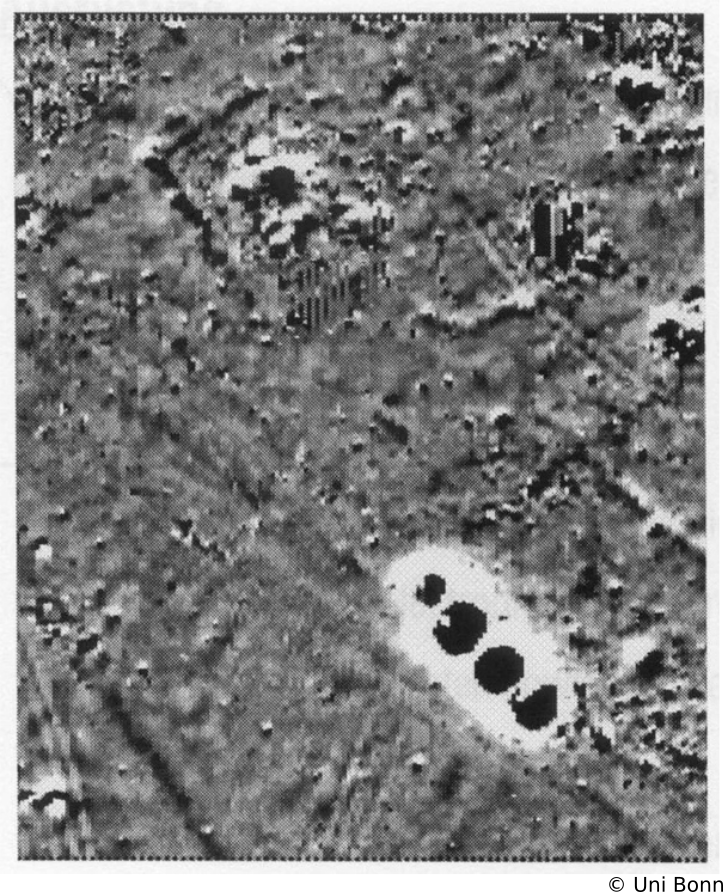
Result of the magnetometer survey: remains of the Great Hall in the north and four kilns in the south, which were not visible to the naked eye. 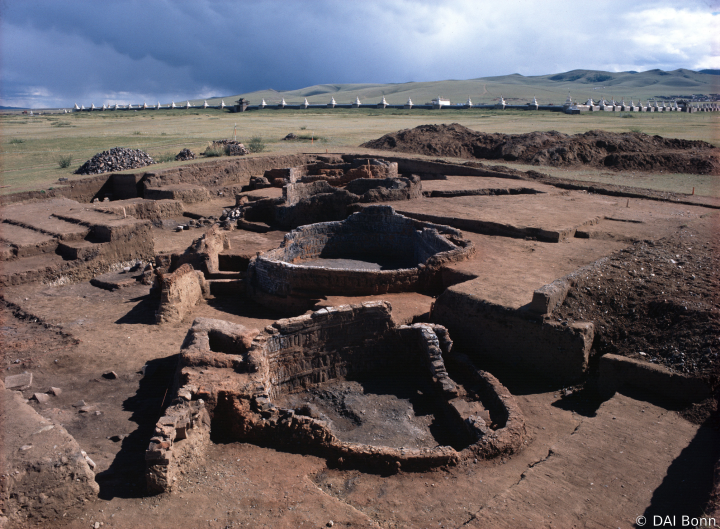
The excavation of the four kilns. 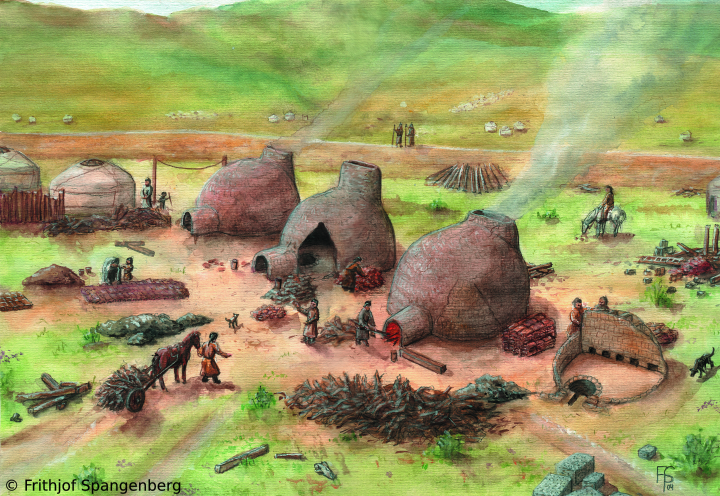
Idea of a reconstruction of the kiln district south of the „Great Hall“. 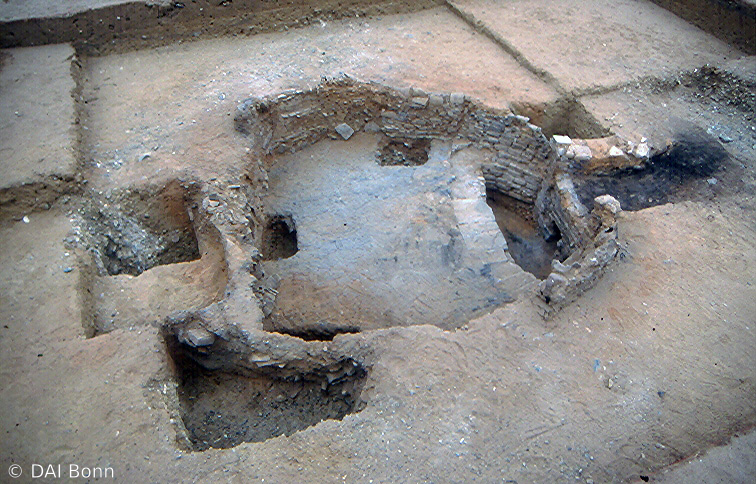
Ceramic kiln northwest of the „Great Hall“ with a well recognizable fire chamber on the right side of the picture.
In 2008 and 2009, 14 more very well preserved kilns were documented three kilometres south-west of the modern city of Charchorin on the western bank of the Orchon. Outside the city there was probably a large workshop and kiln district. These kilns were also used from the end of the 13th to the first half of the 14th century to produce building material for Karakorum. Due to their construction, mainly also in Mantou-style, and due to artistic aspects in the find material, it can be assumed that craftsmen with knowledge of Chinese technologies built and operated the kilns.
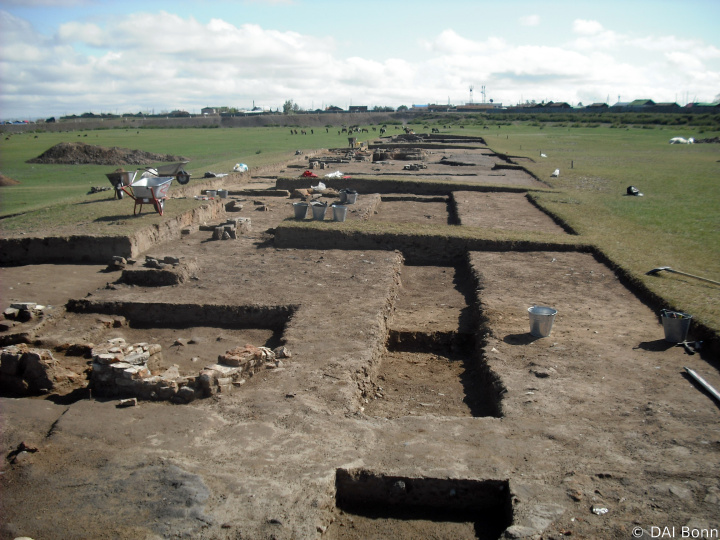
Excavation in the workshop district at the bank of the Orchon, in the background Charchorin. 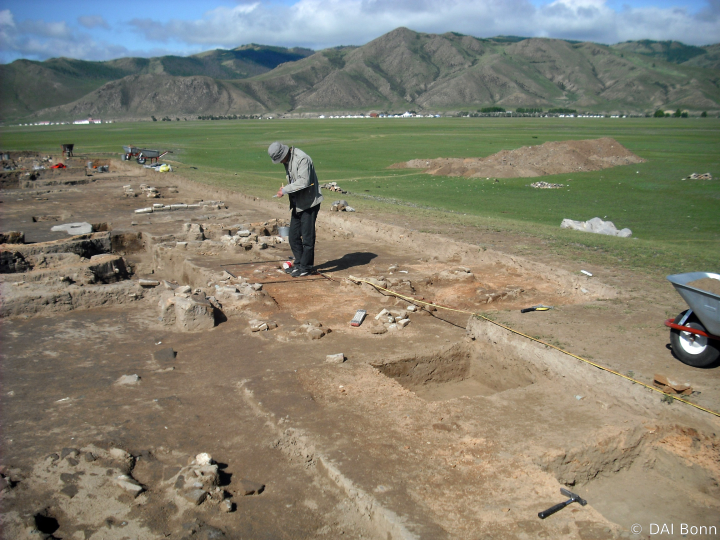
Excavation in the workshop district at the bank of the Orchon, in the background the Orchon. 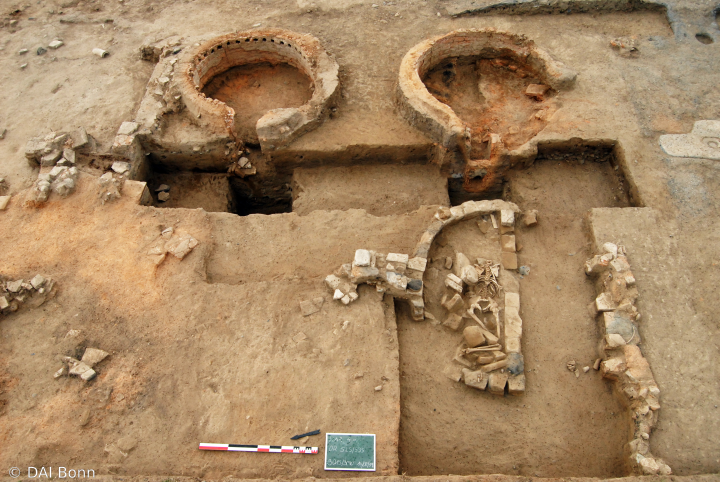
On the right kiln, the firing hole from which the hot air flowed from the firing chamber into the furnace chamber is clearly visible. The reason for the position of the skeleton in the front kiln is unclear. 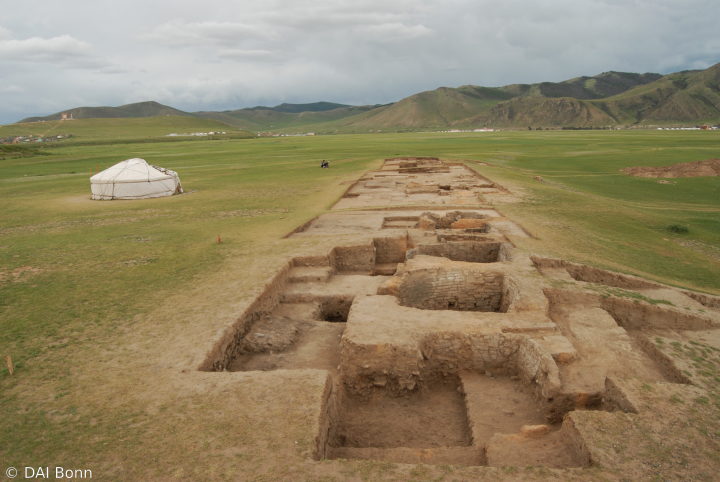
Overview of the kiln district on the banks of the Orchon. 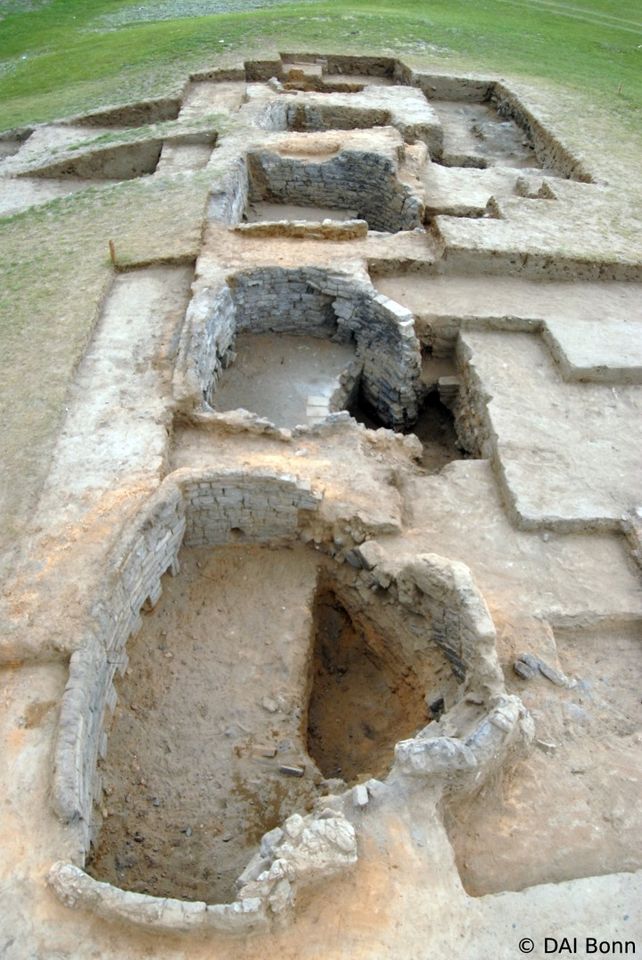
Four very well preserved kilns in Mantou-construction. At the kiln in the foreground the openings from which the hot air from the furnace chamber flowed into the chimney are well visible.

